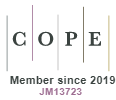The Emergence of the Idea of Irrationality In Renaissance Theoretical Music Contexts
DOI:
https://doi.org/10.15415/mjis.2015.32014Keywords:
maths/music, Renaissance, aritmetization of ratios, numbers as continuum, irrationals in theoretical musicAbstract
This paper intends to consider the interrelationships between mathematics and music in the context of changes in the conception of music during the Renaissance. Western music developed from relying on a cosmological-mathematical-speculative model, in which attention was focused on the rational activity of speculation, to a mathematical-empirical model, in which the main emphasis lay on the quality of the sound itself and on its laws and effects on people. Musical concepts such as temperament, division of the tone, changes in the foundations of theoretical music, mathematical-structural changes in theories of ratio and consequently the emergence of the idea of irrationals and number continuum in theoretical music contexts will be considered here in order to understand the substratum of such a change in the conception of western music.
Downloads
References
B Borzacchini, Luigi. Incommensurability, music, and continuum: a cognitive approach. Archive for History of Exact Sciences, 61, 273-302 (2007). http://dx.doi.org/10.1007/s00407-007-0125-0
C Creese, David E. The Monochord in Ancient Greek Harmonic Science: Cambridge University Press (2010).
Ellsworth, Oliver B. A Fourteenth-century proposal for equal temperament. Medieval and Renaissance Studies 5, 445-453 (1974).
Goldman, David Paul. Nicholas Cusanus’ contribution to music theory. Rivista Internazionale di musica sacra 10/3-4, 308-338 (1989).
Herlinger, Jan W. Marchetto’s division of the whole tone. Journal of the American Musicological Society 34, 193-216 (1981). http://dx.doi.org/10.2307/831346
Scriba, Christoph J. Zum historischen Verhältnis von Mathematik und Musik. Braunschweigische Wissenschaftliche Gesellschaft Jahrbuch 1990, 115-152 (1991).
B Barbera, A. : The Euclidean Division of the Canon. Lincoln: University of Nebraska Press (1991).
B Bower, Calvin M. and Palisca, Claude Victor.: Fundamentals of Music. Anicius Manlius Severi nus Boethius. New Haven & London: Yale University Press (1989).
B Bywater, M.F.: Heinrich Schreiber. Ayn new Kunstlich Buech...1518. London: Scolar Press (1980).
C Caye, Pierre. La question de la proportion. Reflexions pour un humanisme du quadrivium in: Rommevaux, Sabine; Vendrix, Philippe; Zara, Vasco. Proportions – Science, Musique, Peinture & Architecture, 29-49 Collection “Études Renaissantes” Turnhout: Brepols Publishers (2011).
C Ciruelo, Pedro.: Cursus quatuor mathematicarum artium liberalium: quas recollegit atque correxit magister Petro Ciruelus. Alcalá de Henares (1526).
C Cohen, H. Floris.: Quantifying music. The science of music at the first stage of the Scientific Revolution, 1580-1650. Dordrecht: D. Reidel Publishing Company (1984).
Dickreiter, Michael.: The structure of harmony in Johannes Kepler’s Harmonice Mundi (1619). In Gozza. Paolo (ed.), Number to sound. The musical way to the Scientific Revolution, 173-188. Dordrecht: Kluwer Academic Publisher (2000).
Erasmus Horicus. : Musica. Vatican Library, MS Regina lat. 1245 (1500?).
Field, J.V. Ratio and Proportion in the Renaissance in: Rommevaux, Sabine; Vendrix, Philippe; Zara, Vasco. Proportions – Science, Musique, Peinture & Architecture, 29-49 Collection “Études Renaissantes” Turnhout: Brepols Publishers (2011).
Fludd, Robert. : Utriusque cosmi maioris scilicet et minoris metaphysica, physica atque technica historia in duo volumina secundum cosmic differentiam divisa , Oppenheim (1617).
Hagel, Stefan. Ancient Greek Music: A new Technical History. Cambridge: Cambridge University Press (2010).
http://dx.doi.org/10.1017/CB O9780511691591
Joost-Gaugier, Christiane L. Pythagoras and Renaissance Europe: Finding Heaven. Cambridge: Cambridge University Press (2009).
Moyer, Ann E. Reading Boethius on proportion: Renaissance editions, epitomes, and versions of the arithmetic and music in: Rommevaux, Sabine; Vendrix, Philippe; Zara, Vasco. Proportions – Science, Musique, Peinture & Architecture, 29-49 Collection “Études Renaissantes” Turnhout: Brepols Publishers (2011).
Palisca, Claude Victor.: The Musica of Erasmus of Höritz. In Palisca, C. (ed.). Studies in the History of Italian music and music theory, 146-167. Oxford: Clarendon Press (1994).
Palisca, Claude Victor.: Zarlino, Gioseffo. In Stanley, Sadie (ed.).The New Grove dictionary of music and musicians, 646-649. London: Macmillan (1995).
Psellus, Michael.: Pselli, doctiss. uiri, perspicvvs liber de quatuor mathematicis scientijs, arithmetica, musica, geometria, [et] astronomia : Graece et latine nunc primùm editus. Basileae: Oporinus (1556).
R Rommevaux, Sabine; Vendrix, Philippe; Zara, Vasco. Proportions – Science, Musique, Peinture & Architecture. Collection “Études Renaissantes” Turnhout: Brepols Publishers (2011).
R Rommevaux, Sabine. De la proportion au rapport in: Rommevaux, Sabine; Vendrix, Philippe; Zara, Vasco. Proportions – Science, Musique, Peinture & Architecture, 17-27. Collection “Études Renaissantes” Turnhout: Brepols Publishers (2011).
Santiago Kastner, Macario.: Fray Juan Bermudo. Declaración de Instrumentos musicales. Bärenreiter: Verlag Kassel und Basel (1957).
Sylla, Edith Dudley.: Compounding ratios. Bradwardine, Oresme, and the first edition of Newton’s Principia. Mendelsohn, E. (ed.). Transformation and tradition in the sciences. Essays in honor of I. Bernard Cohen, 11-43. Cambridge: Cambridge University Press (1984).
Szabo, Árpád.: The Beginnings of Greek Mathematics. Budapest: Akademiai Kiado (1978). http://dx.doi.org/10.1007/978-94-017-3243-7
Tonietti, Tito M. Music between hearing and counting (a historical case chosen within continuous longlasting conflicts). In Mathematics and Computation in Music, ed. Carlos Agon, Moreno Andreatta Gerard Assayad, Emmanuel Amiot, Jean Bresson, and John Mandereau, 285-296. Berlin: Springer. Http://www.springerlink.com/content/a576762u0w2j4608/ (2011).
http://dx.doi.org/10.1007/978-3-642-21590-2_22
Van Wymeersch, Brigitte. Qu’entend-on par “nombre sourd2? In Music and Mathematics in Late Medieval and Early Modern Europe, ed. Philippe Vendrix, 97-110. Turnhout: Brepols (2011).
Ward, Tom. Music and music theory in the universities of central Europe during the fifteenth century. In Musical Theory in the Renaissance, ed. Cristle Collins Judd, 563-571. Farnham, Surrey: Ashgate (2013 ).
Winnington-Ingram, R. P. “Aristonexus” In: Sadie, Stanley (ed.). The new Grove dictionary of music and musicians, 592. London: Macmillan (1995).
Zarlino, Gioseffo.: Sopplimenti musicali del rev. M. Gioseffo Zarlino da Chioggia. Venetia: Francesco de Franceschi (1588).
Downloads
Published
How to Cite
Issue
Section
License
Articles in Mathematical Journal of Interdisciplinary Sciences (Math. J. Interdiscip. Sci.) by Chitkara University Publications are Open Access articles that are published with licensed under a Creative Commons Attribution- CC-BY 4.0 International License. Based on a work at https://mjis.chitkara.edu.in. This license permits one to use, remix, tweak and reproduction in any medium, even commercially provided one give credit for the original creation.
View Legal Code of the above mentioned license, https://creativecommons.org/licenses/by/4.0/legalcode
View Licence Deed here https://creativecommons.org/licenses/by/4.0/
 |
Mathematical Journal of Interdisciplinary Sciences by Chitkara University Publications is licensed under a Creative Commons Attribution 4.0 International License. Based on a work at https://mjis.chitkara.edu.in |









